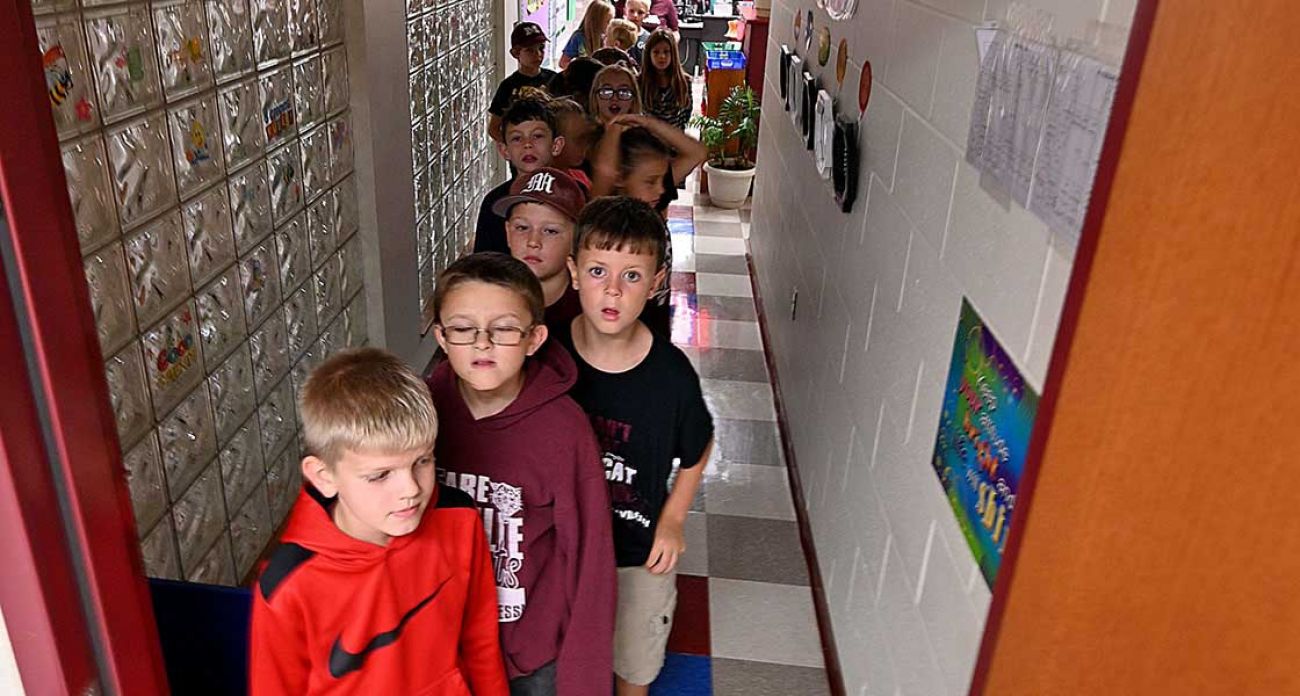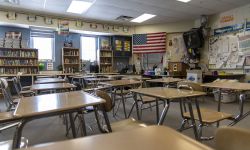Michigan school districts push back on GOP plan for elementary classes

Update: Michigan superintendent: Don’t force schools to resume in-person classes
Online event: What will K-12 education in Michigan look like this fall? Join us to discuss.
Public school buildings in Grand Rapids, Ann Arbor and Lansing will remain shuttered for the beginning of the school year, joining a growing number of school districts defying a Republican legislative plan that threatens the loss of state funding if schools don’t offer a classroom option for elementary students.
Grand Rapids Public Schools Superintendent Leadriane Roby announced in a letter to families and staff Monday she is recommending the 14,000-student district be remote-learning only through Oct. 21, with a decision made later on how to proceed after that date.
“We said that the health, safety, and well-being of our students and staff would be our top priority in decision making,” Roby wrote to parents and staff. “I believe starting with distance learning is the safest approach to the start of school.”
- Michigan school reopening tracker: Find out if your district is starting in person or online
- The latest: Michigan coronavirus unemployment, map, curve, updated COVID-19 news
- Dashboard: Michigan coronavirus testing numbers, trends, COVID-19 data
In a similar announcement last week, Ann Arbor Superintendent Jeanice Swift said her district would start the year with full-remote learning, but without an end date yet set. “We just watched national and locally, all of these starting dates (for in-class instruction) get blown through by the virus,”Swift said. “Our overarching goal is having our community safe and not have our families experience more disruption” if schools are ordered to close as they were in March.
Ann Arbor and Grand Rapids are two of the 10 largest school districts in the state. Other districts that recently announced they will begin the year as they ended last year – with full homebound learning – include Lansing, Waverly, East Lansing, Holt and Okemos school districts in Ingham County, and Melvindale in Wayne County.
Gov. Gretchen Whitmer’s school reopening plan allows districts to plot their own strategy for the fall, as long as minimum safety protocols are put in place, such as face masks for staff and middle and high school students if most of the state remains in Phase 4 of pandemic recovery.
If the state improves to Phase 5, many of the safety requirements become “strong recommendations.” If the coronavirus cases increase and the state lurches back to Phase 3, schools will be ordered to close and return to remote learning.
While the governor’s reopening plan allows schools to choose remote learning for all students, a series of Republican-sponsored school reopening bills that passed the House last week do not.
One of the bills, now awaiting debate in the Senate, requires schools to offer the option of in-classroom instruction for students in kindergarten through fifth grade.
Children typically do not become seriously ill if they contract coronavirus. Also, even some school leaders acknowledge the pressure to bring elementary students back into classrooms, so that parents can return to work. In fact, one of the main reasons that social distancing in classrooms wasn’t required in Whitmers’ back-to-school plan was because keeping students six feet apart would not allow schools to return all students at the same time.
If the Republican bill passes the Senate and is signed into law by Whitmer, schools that keep their buildings closed due to the ongoing pandemic would risk losing state funds.
Whitmer has not directly said whether she opposes the K-5 class requirement in the GOP bill, but in her school reopening plan released June 30, in-person instruction was not required.
Senate Majority Leader Mike Shrikey, R-Clarklake, said Monday in a radio interview that he hopes to negotiate details of a school reopening plan with Whitmer and send her bills to sign Aug. 6.
"Our next session day is Aug. 6, and it is our intent at that point in time to pass a series of bills to the governor specifically related to school start,” Shirkey said in a radio interview Monday. “Very important is the definition of how do they [schools] count the number of kids, and therefore that translates into what their funding is. We have to remove that uncertainty now so that schools can begin to plan. My goal is to send a package to the governor on Aug. 6 that outlines what the Legislature AND the governor's office have worked out. And hopefully we'll get a lot of the uncertainty resolved so the schools and parents can start planning for the fall."
The current Republican bill requires schools to offer in-school instruction for K-5 students in order to receive a waiver for seat-time requirements that are used to determine student funding. Those seat-time requirements mandate that schools have 75 percent of students in school to receive funding.
State Rep. Pamela Hornberger, R-Chesterfield Township, which is in Macomb County, told Bridge Monday that it’s “very scary” to have schools continue with remote learning.
“I’ve talked to a lot of parents who are skeptical of what school will look like if it is only online,” Hornberger said. “If it’s the same thing as this spring, they don’t want it.”
Hornberger, who is a former teacher, said she knows the switch to remote learning was a “heavy lift” for schools in the spring, who had to create online lessons in a matter of days when Whitmer ordered all schools closed in mid-March. “I don’t know a lot of districts that are completely ready even this fall.”
School leaders expect many students will suffer a large learning loss from being out of classrooms for almost six months, and Hornberger said she is concerned that continued remote learning will exacerbate that learning deficit.
Dayna Polehanki, D-Livonia, who is also a former teacher, blasted the GOP plan. “Passing a sweeping law that requires students in grades K-5 to have in-person instruction no matter which MI Safe Start phase Michigan finds itself in during any given point in the upcoming school year is unsafe, and I won’t support it,” Polehanki told Bridge in an email Monday.
Whitmer spokesperson Robert Leddy did not address directly what the governor’s response would be to a bill requiring schools to offer the option of in-person K-5 instruction. Leddy accused the Republican-controlled Legislature of trying to “undermine” the governor’s plan that was developed by a task force made up of educators and community and health officials.
“As educators are developing their lesson plans to prepare for any contingency this fall, the least the legislature can do is provide clarity on the number of days and hours required for instruction, and ensure that schools won’t be penalized if attendance fluctuates,” Leddy said in an email.
John Helmholdt, spokesperson for Grand Rapids Public Schools, said district leaders were aware their plan runs afoul of the GOP school reopening bill.
“We’ve said publicly, any decision-making is going to be based on the safety of our students, families and staff,” Helmholdt said. Starting the school year with remote-only learning “is the most prudent and safest route.
“Last spring was (unprecedented) for Michigan schools, and we believe we are still in these unprecedented times,” Helmholdt told Bridge Monday. “We hope the governor and our friends in the Legislature provide the opportunity for districts to have the flexibility” to create their own reopening plans.
Michigan Education Watch
Michigan Education Watch is made possible by generous financial support from:
Subscribe to Michigan Education Watch
See what new members are saying about why they donated to Bridge Michigan:
- “In order for this information to be accurate and unbiased it must be underwritten by its readers, not by special interests.” - Larry S.
- “Not many other media sources report on the topics Bridge does.” - Susan B.
- “Your journalism is outstanding and rare these days.” - Mark S.
If you want to ensure the future of nonpartisan, nonprofit Michigan journalism, please become a member today. You, too, will be asked why you donated and maybe we'll feature your quote next time!





